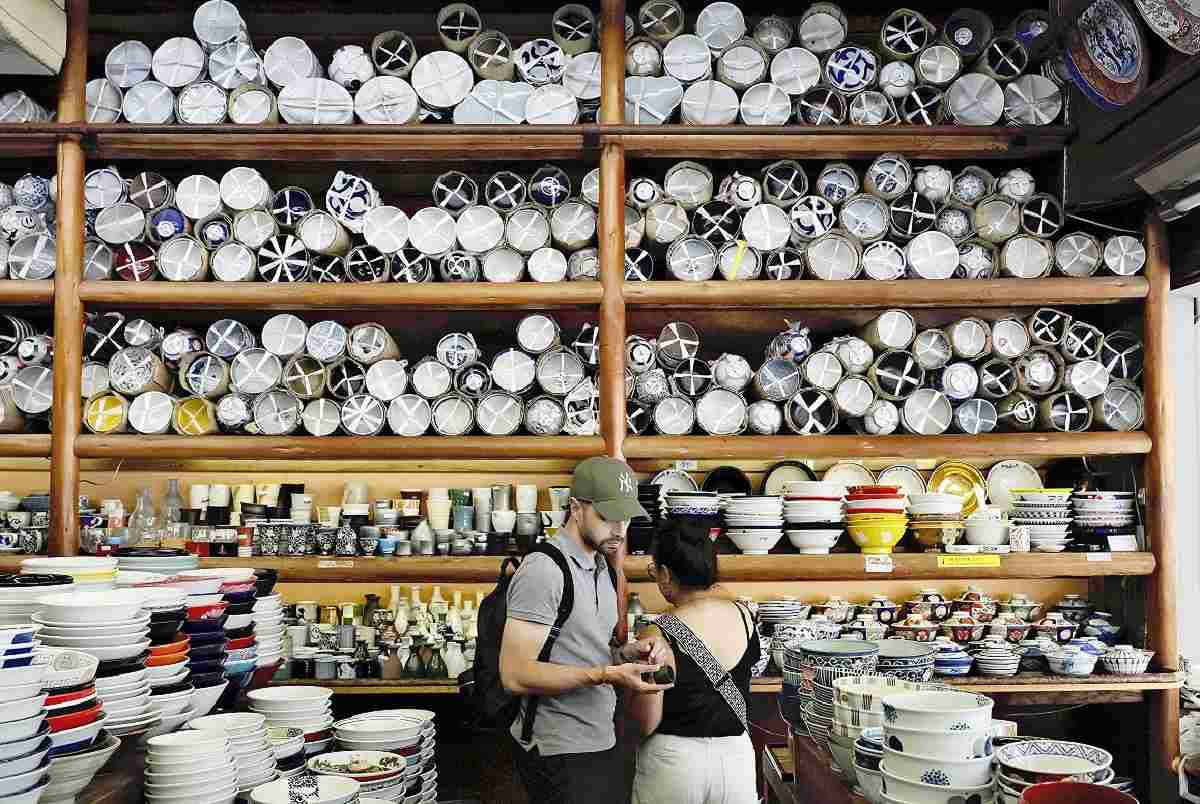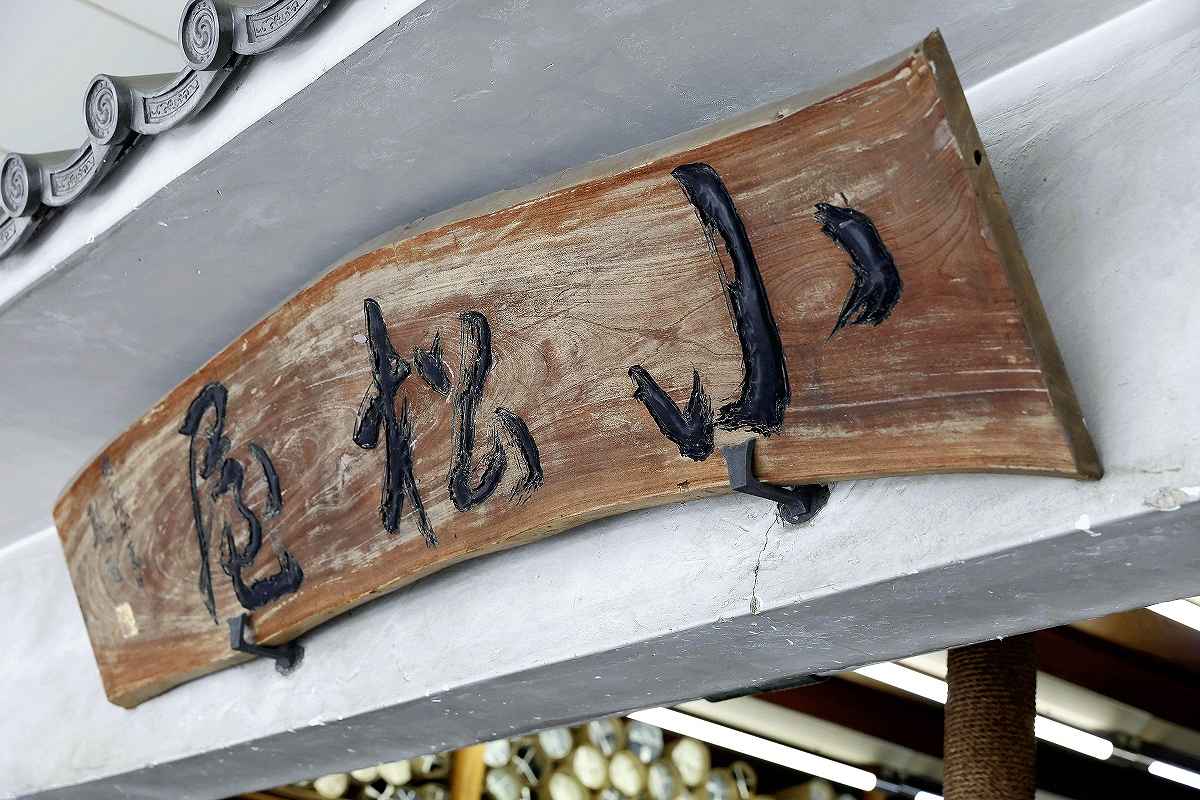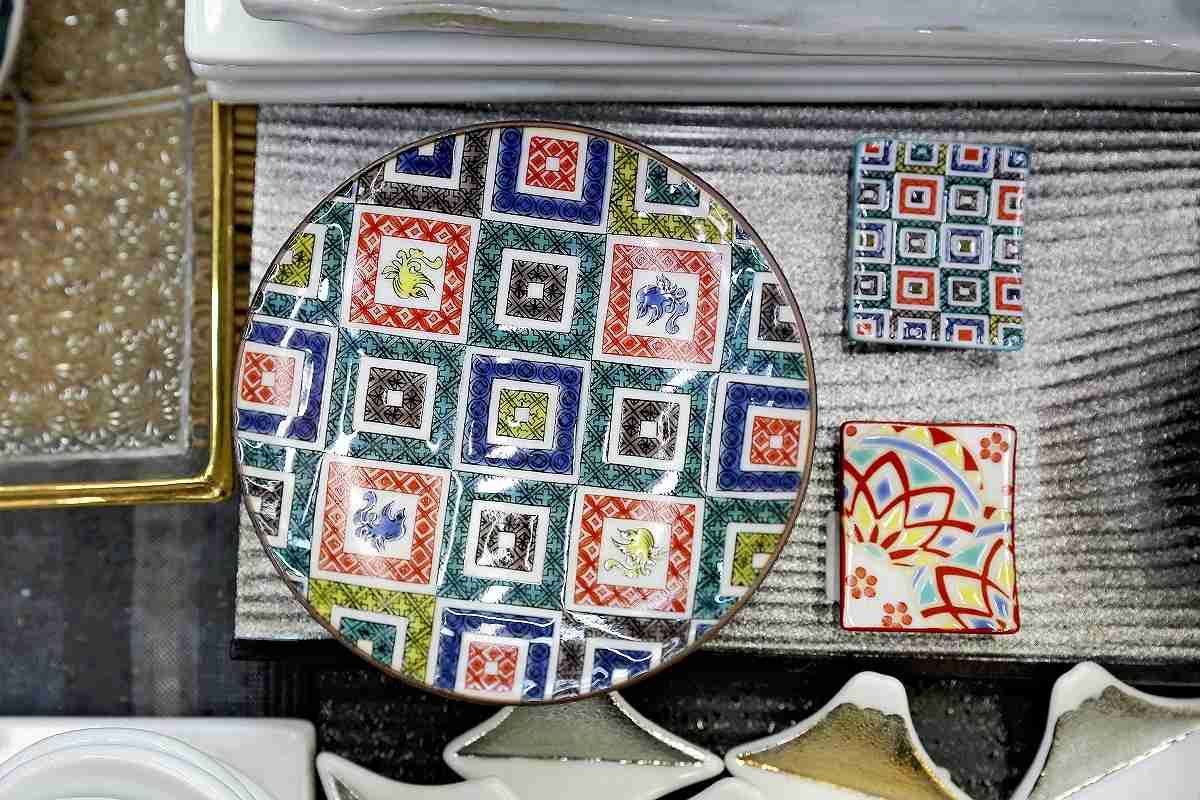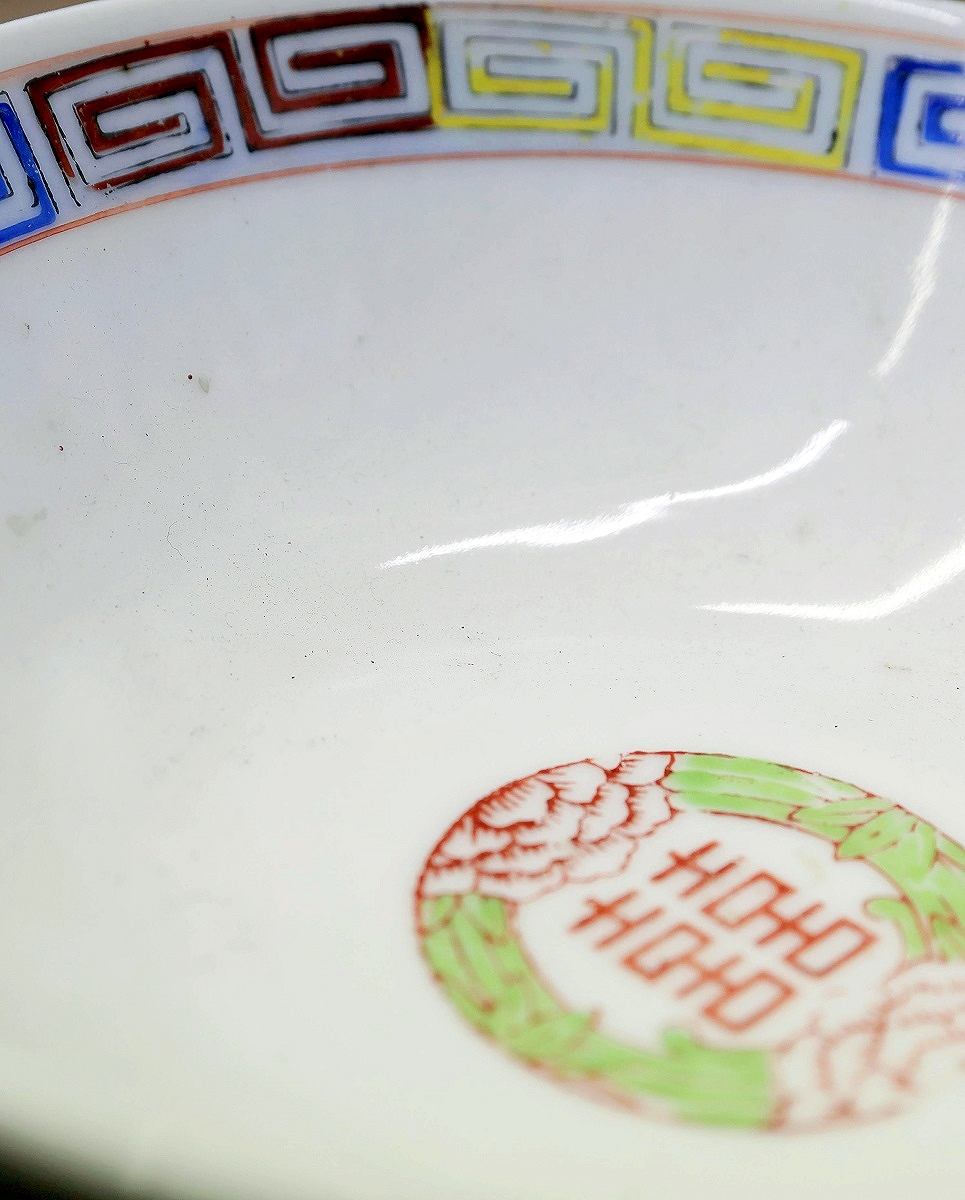
Bowls and plates tied with strings fill the upper shelves at Komatsuya.
13:02 JST, September 9, 2024

Komatsuya’s sign, bearing the shop name in calligraphy, hangs under the shop’s eaves.
The Komatsuya ceramics store has been peddling its wares since 1909, from its spot on Kappabashi Dogugai street in Taito Ward, Tokyo. All along the street are stores that offer various supplies for restaurants.
At Komatsuya, the shelves covering the walls, which reach six meters up, are packed with bowls and plates tied with plastic strings.
“It’s an efficient way to store them. It also helps to assure restaurants that we have ample stock, since they need many of the same bowl or dish,” said Kentaro Moto, 70, the fourth-generation owner of Komatsuya. Moto said that in the past they used straw ropes instead of plastic strings and would burn them after use.

A colorful plate and chopstick rests show the flamboyance of Kutani ware.
The shop’s first owner was from Komatsu, Ishikawa Prefecture, which is known for its Kutani porcelain. He moved to Tokyo to sell the traditional craft, which he was proud of, but found it a difficult sell as the pieces were too expensive and flamboyant for daily use.
He soon decided to switch to affordable tableware and began selling it wholesale to restaurants in and around Tokyo’s Asakusa district.
Komatsuya’s second-generation owner was a keen businessman. He turned his attention to ramen bowls around the end of the Taisho era (1912-1926), designed a raimon motif — a kind of spiral pattern that is regarded as lucky in China — and applied it to the brims of the bowls.

A ramen bowl from around 1960
The shop was soon fielding many orders for the bowl from Chinese restaurants, and the piece also became a standard for ramen shops.
A ramen bowl from around 1960 on display in the shop measures 18 centimeters in diameter, somewhat smaller than today’s ramen bowls. The reason is said to be because many people ate ramen standing up at restaurants in those days, and there was a preference for bowls that could easily be held in the hand.
Komatsuya offers about 2,500 types of tableware. Of these, about 500 are for Chinese cuisine, and they account for half of the store’s sales. The store’s customers come from many places around Japan, including Yokohama Chinatown.
Thanks to its location in Tokyo’s old downtown area, Komatsuya is visited by about 200 foreign tourists a day. According to Moto, Americans like products in bright colors, while people from France prefer chic blue and white designs.
“For foreigners, Kappabashi is a theme park. We have many repeat customers,” said a smiling Moto, who is also the chairman of the local merchants’ association.
***
Komatsuya

Address: 2-21-6 Nishi-Asakusa, Taito Ward, Tokyo
Access: A five-minute walk from Tawaramachi Station on the Ginza Line
Hours: Open Monday through Saturday from 8:45 a.m. to 5:45 p.m., and from 10 a.m. to 5 p.m. on Sundays and national holidays
Related Tags
"Features" POPULAR ARTICLE
-

Sanrio to Open Museum in Yamanashi Pref. Dedicated to Founder, Exhibits Include Hello Kitty, Other Characters
-

Autumn Foliage Surrounds Visitors to Tokyo’s Showa Kinen Park
-

My Daughter No Longer Speaks to Me, But I Want to See Her and My Grandchild
-

Kumamoto: Public Bath Refurbished as Library Where You Can Chat, Take Photos
-

Frozen Vegetables: Demand Rises for Convenient, Tasty Domestic Produce
JN ACCESS RANKING
-

Tokyo Economic Security Forum to Hold Inaugural Meeting Amid Tense Global Environment
-

Keidanren Chairman Yoshinobu Tsutsui Visits Kashiwazaki-Kariwa Nuclear Power Plant; Inspects New Emergency Safety System
-

Imports of Rare Earths from China Facing Delays, May Be Caused by Deterioration of Japan-China Relations
-

University of Tokyo Professor Discusses Japanese Economic Security in Interview Ahead of Forum
-

Japan Pulls out of Vietnam Nuclear Project, Complicating Hanoi’s Power Plans

























